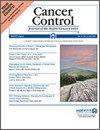中性粒细胞与淋巴细胞比率和血小板与淋巴细胞比率对免疫检查点抑制剂在非小细胞肺癌患者中疗效的可预测性:元分析
IF 2.5
4区 医学
Q3 ONCOLOGY
引用次数: 0
摘要
目的 通过荟萃分析评估中性粒细胞-淋巴细胞比值(NLR)和血小板-淋巴细胞比值(PLR)与接受免疫检查点抑制剂(ICI)治疗的非小细胞肺癌(NSCLC)患者的反应之间的关系以及NLR/PLR的预测潜力。方法 使用PubMed、Embase和The Cochrane Library数据库进行系统综述,直至2021年10月。采用集合危险比(HR)评估了 NLR/PLR 与总生存期(OS)和无进展生存期(PFS)之间的关系。NLR/PLR与总体反应率(ORR)和疾病控制率(DCR)之间的关系通过汇总赔率(OR)进行评估。研究之间的异质性、发表偏倚、亚组和敏感性分析、修剪和填充荟萃分析以及等高线增强漏斗图均使用 R 软件进行。据统计,NLR高的患者预后较差,包括OS(汇总HR = 2.44;P <;0.001)、PFS(汇总HR = 2.06;P <;0.001)、DCR(汇总OR = 0.71;P <;0.001)和ORR(汇总OR = 0.33;P <;0.001)。结论高NLR和PLR与ICI药物对NSCLC患者疗效的统计学显著降低有关。因此,在临床实践中可以将NLR和PLR作为潜在的、可用的生物标志物来预测NSCLC患者接受ICI治疗的结果。本文章由计算机程序翻译,如有差异,请以英文原文为准。
Predictability of Neutrophile to Lymphocyte Ratio and Platelet to Lymphocyte Ratio on the Effectiveness of Immune Checkpoint Inhibitors in Non-small Cell Lung Cancer patients: A Meta-Analysis
ObjectivesThe associations between the neutrophil-lymphocyte ratio (NLR) and platelet-to-lymphocyte ratio (PLR) with the responses of non-small cell lung cancer (NSCLC) patients receiving immune checkpoint inhibitors (ICI) and the NLR/PLR predictive potential were evaluated via meta-analysis.MethodsA systematic review was conducted using the PubMed, Embase, and The Cochrane Library databases until October 2021. The relationship between NLR/PLR and overall survival (OS) and progression-free survival (PFS) was evaluated using pooled hazard ratios (HR). The relationship between NLR/PLR and overall response rate (ORR) and disease control rate (DCR) was assessed via pooled odds ratios (OR). Heterogeneity between studies, publication bias, subgroup and sensitivity analyses, trim and fill meta-analysis, and the contour-enhanced funnel plot were performed using the R software.ResultsA total of 44 (out of 875) studies met the eligibility criteria, providing a sample size of 4597 patients. Patients with a high NLR were statistically significantly associated with worse outcomes, including OS (pooled HR = 2.44; P < 0.001), PFS (pooled HR = 2.06; P < 0.001), DCR (pooled OR = 0.71; P < 0.001), and ORR (pooled OR = 0.33; P < 0.001). Similarly, a high PLR was associated with poorer outcomes in response to ICI drugs, including OS (pooled HR = 2.13; P < 0.001) and PFS (pooled HR = 1.61; P < 0.001).ConclusionHigh NLR and PLR were associated with a statistically significant reduction in the efficacy of ICI drugs in NSCLC patients. Thereby, it is possible to use NLR and PLR as potential and available biomarkers in the clinical practice to predict the outcome of ICI treatment in NSCLC patients.
求助全文
通过发布文献求助,成功后即可免费获取论文全文。
去求助
来源期刊

Cancer Control
ONCOLOGY-
CiteScore
3.80
自引率
0.00%
发文量
148
审稿时长
>12 weeks
期刊介绍:
Cancer Control is a JCR-ranked, peer-reviewed open access journal whose mission is to advance the prevention, detection, diagnosis, treatment, and palliative care of cancer by enabling researchers, doctors, policymakers, and other healthcare professionals to freely share research along the cancer control continuum. Our vision is a world where gold-standard cancer care is the norm, not the exception.
 求助内容:
求助内容: 应助结果提醒方式:
应助结果提醒方式:


